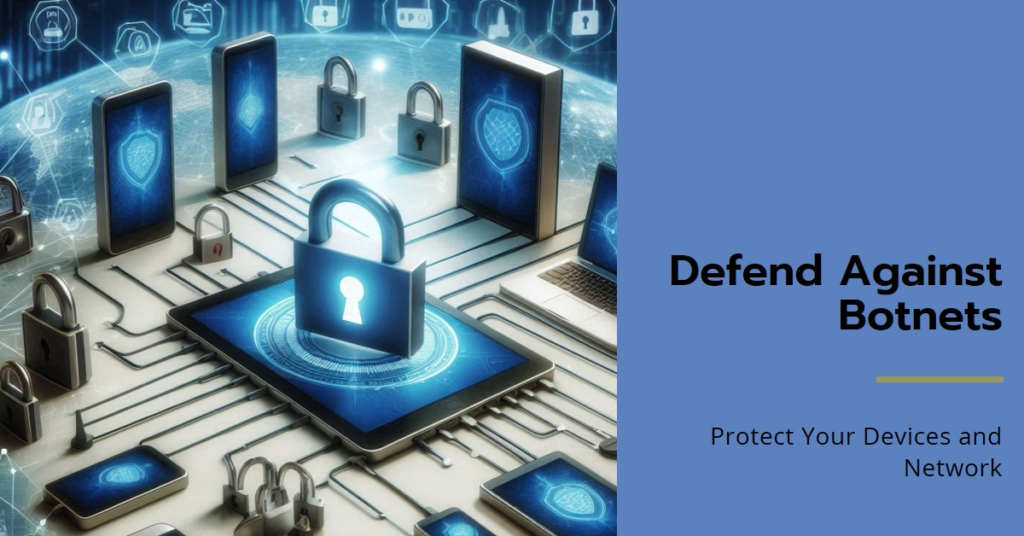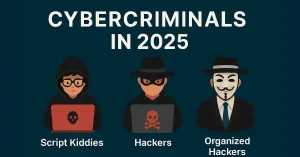Malicious actors hide while controlling many infected machines. Owners are unaware that their computers are being used in cybercrimes. These machines, called “bots” or “zombies” follow commands. Online threats loom large. Botnets wield immense disruptive power. Our digital age demands vigilance against these shadowy networks. Grasping their nature is key to safeguarding our interconnected lives.
What is A Botnet?
Malware-infected devices form a sinister network called a botnet. Computers, smartphones, and IoT gadgets become unwitting participants in a robot network.” Once compromised, these machines obey a distant puppet master—the bot herder. This digital army stands ready, awaiting orders from its shadowy commander.
How Do Botnets Work?
Exploiting device flaws, botnets install malware to hijack control. Sinister puppet masters wield compromised systems, turning them into digital weapons. These unseen overlords run vast botnets for evil ends. Here are some common uses of botnets:
- DDoS Attacks:
Overwhelmed by a digital deluge, targeted websites buckle. A Botnet orchestrate the onslaught, flooding servers with traffic. Users find themselves locked out, unable to access the swamped site. - Spam and Phishing:
Massive spam and phishing campaigns flood inboxes, courtesy of botnets. Users face a barrage of deceptive messages, each a digital landmine. One wrong click could expose personal data or infect systems. Networks conduct ongoing searches for weaknesses, exploiting human reliance. - Data Theft:
Infected devices fall prey to a botnet, covert networks that pilfer crucial data. Passwords, bank accounts, and private info vanish into the digital underworld. This leaves users vulnerable and exposed. - Cryptocurrency Mining:
Infected devices in certain botnets mine cryptocurrencies, lining attackers’ pockets with illicit profits. This covert exploitation turns compromised machines into unwitting digital miners. Click fraud: Attackers can use botnets to fake clicks on ads. This defrauds advertisers and makes money for the attackers.

How Do Devices Get Infected?
Devices can become part of a botnet through various methods, including:
- Phishing Emails: Deceptive emails masquerade as trustworthy. Unsuspecting victims click harmful links or download tainted files. They fall prey to cybercriminals’ clever ruses.
- Malicious Websites: Visiting compromised websites can have serious consequences. One of the most common risks is that they can infect your device with malware. This is because hacked sites often have malicious code. Files transfer immediately upon page access on your device.
- Software Vulnerabilities: Hackers sneak malware into systems by targeting flaws in software. These vulnerabilities allow covert installations, bypassing security measures. Skilled attackers leverage obscure bugs to plant hidden threats, compromising networks undetected.
- Caution: unknown files lurk with danger. Malware preys on careless clicks. Think twice before installing—your device’s health depends on it. Stay vigilant, stay safe.
The Impact of a Botnets
Botnets pose significant threats to both individuals and organizations. The impact of a botnets attack can include:
- Financial Loss: Botnet attacks can cause huge financial losses. They can lead to fraud, data theft, and service disruptions.
- Reputation damage: Botnet attacks can harm an organization’s reputation and customer trust.
- Operational Disruption: DDoS attacks disrupt websites and online services. They frustrate users and cut profits. The digital world shakes under constant attacks. Businesses bear the costs of these disruptions.
- Legal Consequences: Organizations that don’t protect their systems from botnets may face penalties.
Protecting Against Botnets
To protect against botnet attacks, individuals and organizations should take the following measures:
- Use Antivirus Software: Install and update antivirus software to detect and remove malware.
- Update all software: including the OS and apps, with the latest security patches.
- Be cautious with emails: Don’t click links or download attachments from unknown or suspicious senders.
- Use Strong Passwords: Use strong, unique passwords for all accounts. Enable two-factor authentication where possible.
- Secure IoT Devices: Change default passwords and update the firmware on IoT devices.
- Regular Backups: Shield vital information from potential attacks. Install frequent backups of crucial data as a safeguard against loss.

Conclusion
Botnets pose a severe threat in cybercrime. Understanding their nature and operation empowers you to safeguard devices and data. Stay vigilant and take proactive steps to bolster your digital defenses. Awareness and preparation are your best shields against these malicious networks. By prioritizing cybersecurity, you diminish the risk of falling victim to botnet attacks. Remain informed and protected in our interconnected world.
FAQs
Q1: What is a botnet?
A botnet is a network of infected, internet-connected devices. Malware allows an attacker to seize remote control.
Q2: How do a botnet work?
Botnets exploit device vulnerabilities to install malware. Attackers gain remote control of infected devices through this.
Q3: What are common uses of a botnet?
Botnets are often used for DDoS attacks, spam, phishing, and data theft. They are also used for crypto mining and click fraud.
Q4: How do devices get infected by botnets?
Devices can join a botnet via phishing emails, malicious sites, and infected downloads. Hackers can also exploit software flaws.
Q5: What are the impacts of botnet attacks?
Botnet attacks can cause financial loss, reputational damage, and legal issues. They can disrupt operations, too.





